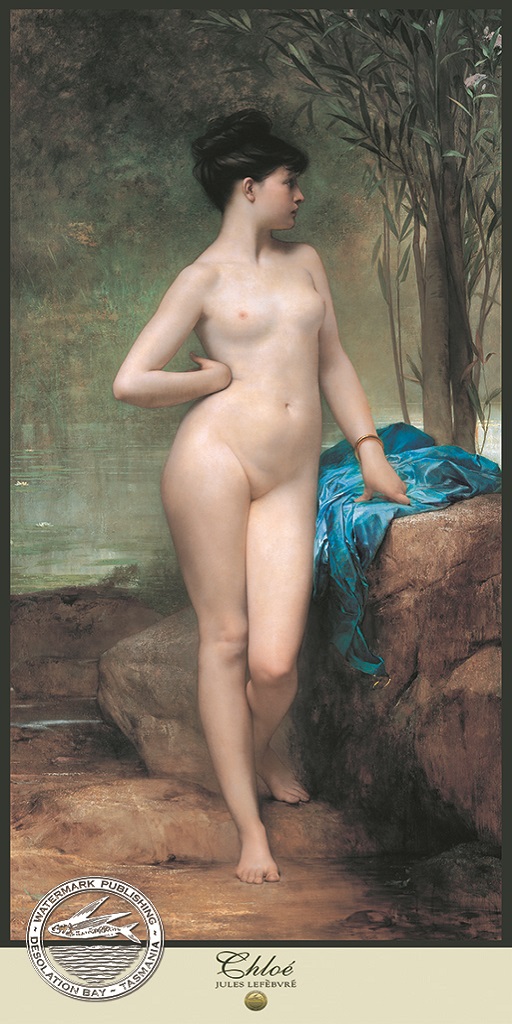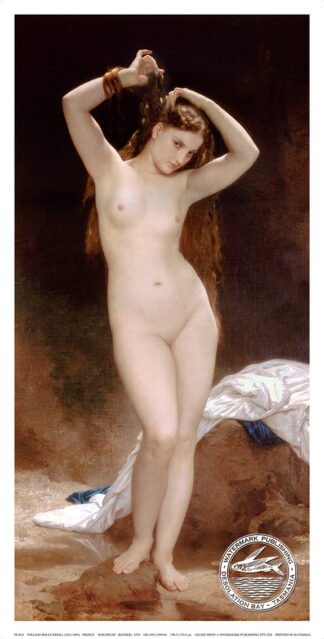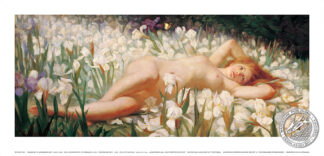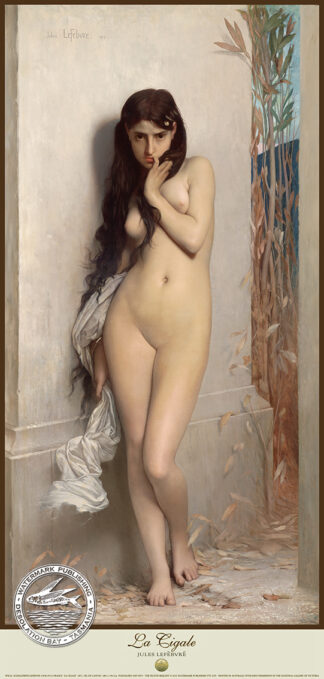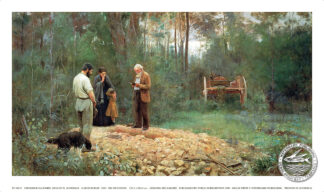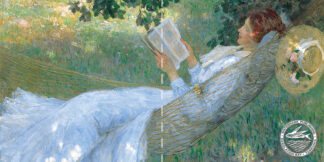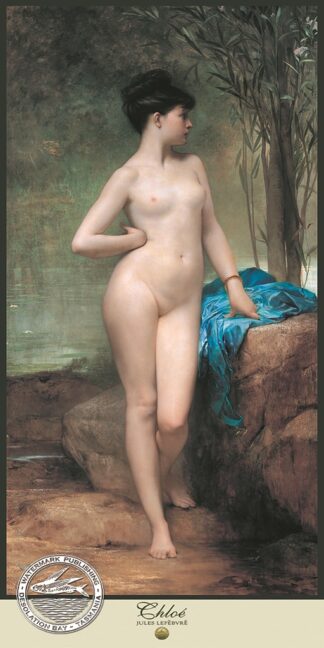Description
The painting “Chloe”, (1875) by Jules Lefebvre
This is one of Lefebvre’s best-known paintings and a cultural icon in Australia, especially in Melbourne. It shows a young, nude woman with pale, porcelain-like skin. She stands in a natural setting, symbolising beauty and innocence in a classical way.
Her calm pose and gentle expression give her a peaceful, graceful look. The fine details show Lefebvre’s talent in painting the human body. Her glowing skin and the soft brushstrokes make the painting feel dreamy and light. It’s a clear example of academic-style art.
Chloé became famous in Australia after Dr. Thomas Fitzgerald bought it in 1883. He displayed it in the Young and Jackson Hotel in Melbourne. Since then, the painting has become a much-loved symbol of the city. People admire it for both its beauty and its link to Melbourne’s culture. Being placed in a public place helped it gain wide attention and made Chloé a lasting part of the city’s history.
The artist Jules Lefebvre (1836–1911)
Jules Lefebvre was a well-known French painter in the 19th century. He became famous for painting women and portraits in a realistic and detailed style. He was part of the academic art tradition, which focused on classical subjects and strong technical skill.
Lefebvre studied at the top art school in Paris, the École des Beaux-Arts, where he trained under Léon Cogniet. In 1861, he won the Prix de Rome, a big art prize that let him study in Italy and improve his work. During his life, Lefebvre created many paintings. These included portraits, scenes from history, and stories from myths. His work is known for its soft detail and graceful design.
Lefebvre was also an important teacher. He taught at the Académie Julian in Paris and helped guide many young artists who later became famous themselves. His role as a teacher added to his lasting impact on the art world.

